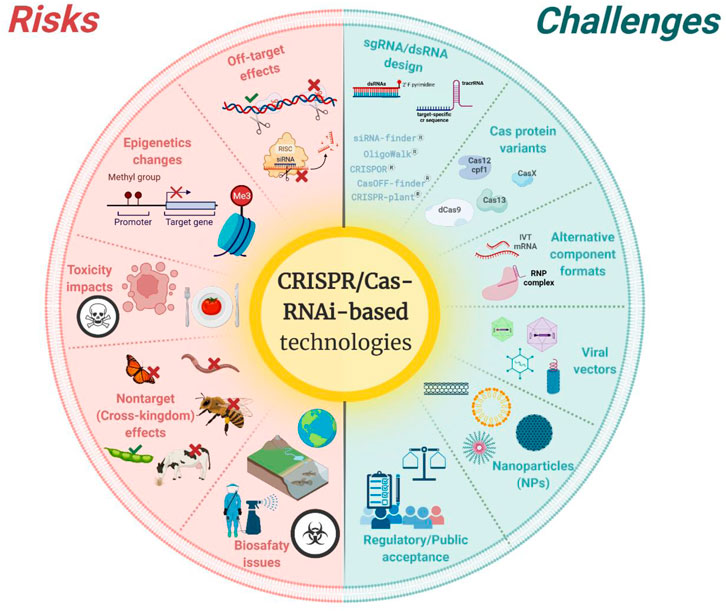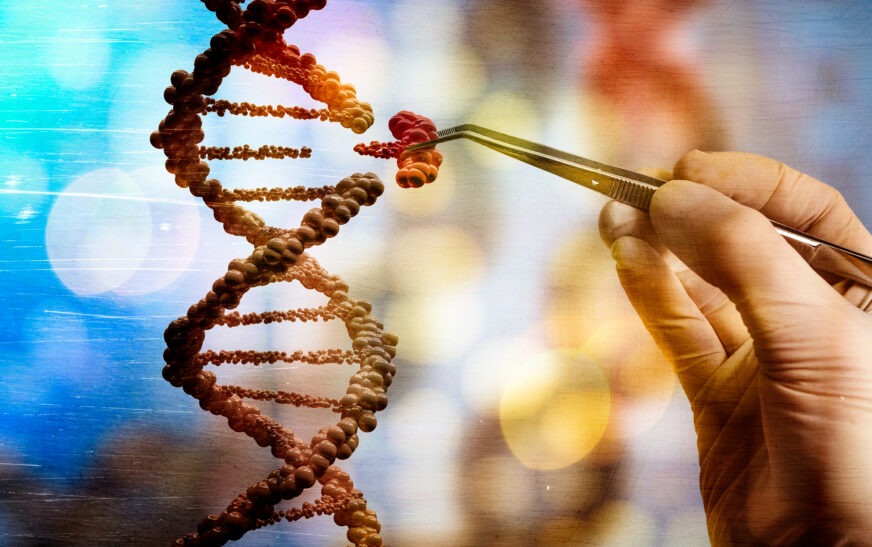Introduction to CRISPR Gene Editing
Imagine a world where we can edit genes with the precision of a word processor. This isn’t science fiction; it’s the reality brought to life by CRISPR gene editing technology. With its remarkable ability to modify genetic sequences, CRISPR has opened up new frontiers in medicine, agriculture, and research.
From curing genetic disorders to enhancing crop resilience, this powerful tool is reshaping our understanding of genetics and what it means for future generations. But what exactly is CRISPR? How did we arrive at this groundbreaking method of manipulation? Join us as we dive into the fascinating journey of CRISPR technology and explore its potential impact on society.

The History and Development of CRISPR Technology
CRISPR technology has its roots in a fascinating discovery made by microbiologists studying the immune systems of bacteria. These scientists uncovered a unique mechanism that allowed bacteria to remember and defend against viruses.
The term CRISPR stands for “Clustered Regularly Interspaced Short Palindromic Repeats.” This sequence, alongside associated proteins like Cas9, became a powerful tool for genetic modifications. Early research in the 1980s laid the groundwork, but it wasn’t until 2012 that Jennifer Doudna and Emmanuelle Charpentier transformed this concept into an editing tool usable across various organisms.
Their groundbreaking paper revealed how CRISPR could be harnessed for precise gene alterations. This innovation sparked immense interest in diverse fields ranging from agriculture to medicine. As researchers embraced this technology, CRISPR evolved rapidly, establishing itself as a focal point of scientific exploration and debate.
How CRISPR Works: A Step-by-Step Process
CRISPR technology operates through a fascinating mechanism that harnesses the power of nature. It starts with identifying the target gene within a DNA sequence. Scientists introduce a guide RNA, specifically designed to match the target’s genetic code.
Once the guide RNA is in place, it binds to the DNA at precise locations. This binding acts as a signal for an enzyme called Cas9, which functions like molecular scissors. Cas9 then cuts both strands of DNA at the targeted site.
After this cut occurs, natural repair processes kick in. Cells can either fix this break by inserting new genetic material or simply gluing the ends back together. Researchers exploit these repair mechanisms to make intentional changes—either disrupting faulty genes or inserting beneficial ones.
The precision of CRISPR lies in its ability to deliver these modifications seamlessly and efficiently, making it a revolutionary tool for genetic advancements across various fields.

Advantages and Limitations of CRISPR Gene Editing
CRISPR gene editing offers remarkable precision in altering genetic material. This technology allows scientists to target specific genes with unmatched accuracy, leading to potential breakthroughs in treating genetic disorders.
One significant advantage is its efficiency. Traditional methods of gene modification can be time-consuming and imprecise. CRISPR streamlines this process, making it faster and more reliable.
However, limitations do exist. Off-target effects are a concern; unintended changes may occur elsewhere in the genome, leading to unforeseen consequences. This unpredictability raises questions about safety and long-term impacts.
Moreover, the accessibility of CRISPR technology means that not all applications are ethically sound. Some modifications could lead to controversial uses like designer babies or ecological disruptions if misapplied.
Balancing these advantages against their limitations is crucial for responsible advancement in genetic research and therapy.
Ethical Concerns Surrounding CRISPR Technology
The rise of CRISPR technology brings not only excitement but also significant ethical concerns. As scientists gain the ability to make precise genetic modifications, questions emerge about the implications of these changes.
One major issue revolves around human gene editing. The potential for “designer babies” raises fears about social inequality and eugenics. If some can afford enhancements, what happens to those who cannot?
Another concern is ecological impact. In agriculture, altering crops could disrupt local ecosystems in unforeseen ways. Introducing genetically modified organisms may have long-term consequences that we can’t predict.
Then there’s the question of consent. For germline modifications affecting future generations, who speaks for those yet unborn?
These ethical dilemmas challenge our perception of natural boundaries and responsibilities as creators in a world where precision genetics is increasingly at our fingertips.
Applications of CRISPR in Medicine, Agriculture, and Research
CRISPR technology is revolutionizing medicine in remarkable ways. Scientists are exploring its potential to treat genetic disorders like sickle cell anemia and cystic fibrosis. By precisely editing genes, they aim to correct mutations at their source.
In agriculture, CRISPR offers a pathway to create crops that are more resilient against pests and climate change. Farmers can benefit from higher yields without relying heavily on chemical pesticides or fertilizers.
Research labs around the world are harnessing CRISPR for various experiments. It helps scientists understand gene functions by enabling them to knock out specific genes and observe the effects. This knowledge propels advancements across multiple fields including biology, genetics, and biotechnology.
With these applications gaining traction, CRISPR promises not only improved health solutions but also sustainable agricultural practices. The possibilities seem limitless as we continue to explore this innovative tool’s vast potential in different sectors.

Current Challenges and Future Directions for CRISPR
CRISPR technology has revolutionized the field of genetics, but it faces significant challenges. One pressing issue is off-target effects, where unintended parts of the genome may be altered. This raises concerns about safety and efficacy in therapeutic applications.
Another challenge lies in public perception and understanding of genetic modifications. Misinformation can hinder acceptance and regulatory progress. Scientists must communicate their findings effectively to build trust with society.
Regulatory frameworks are still evolving. Striking a balance between innovation and ethical considerations remains critical for responsible implementation.
Future directions involve refining CRISPR techniques for higher precision, minimizing risks associated with gene editing. Researchers are exploring new delivery methods to enhance effectiveness while reducing side effects.
The potential for CRISPR extends beyond human health into agriculture and environmental science as well. Adapting these technologies could lead to sustainable solutions addressing food security and ecosystem management.

Conclusion: The Potential Impact of CRISPR
The potential impact of CRISPR technology is vast and multifaceted. As we stand on the brink of a new era in genetic science, the possibilities for gene editing seem endless. From curing genetic disorders to enhancing agricultural productivity, CRISPR presents opportunities that could transform various sectors.
Imagine a world where hereditary diseases are effectively eradicated through precise modifications at the DNA level. This revolutionary approach can lead to personalized therapies tailored to an individual’s unique genetic makeup, paving the way for breakthroughs in medicine previously thought unattainable.
In agriculture, CRISPR offers solutions to enhance crop resilience against pests and climate change while reducing reliance on harmful pesticides. The ability to make targeted modifications ensures that food security can be addressed sustainably.
However, as we explore these advancements, it is crucial to navigate ethical considerations carefully. Balancing innovation with responsible stewardship will shape how society adopts this powerful tool.
As research continues and applications expand, CRISPR’s role in our future becomes increasingly significant. Its capacity for precision in genetic modifications holds promise beyond what we currently understand—a landscape rife with both challenges and remarkable potential yet to be realized.






